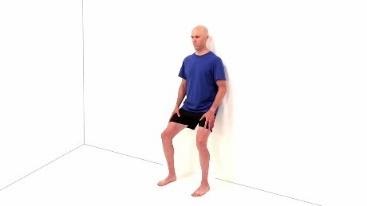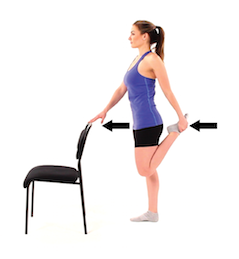Osgood–Schlatter Disease
What is Osgood–Schlatter Disease?
Osgood-Schlatter disease (OSD) is a type of anterior knee pain seen in the pediatric population, specifically in growing adolescents. Children have growth plates towards the end of bones that continue to contribute to the length of the bones until the child matures and these growth plates ossify (Become a part of the bone). In adults, bone is stronger than muscle and the associated tendons that attach muscle to bone, but this is not true for the pediatric population. The growth plates represent areas of weakness of the bone and are thus more susceptible to traction or pulling injuries. The patellar tendon serves as an anchoring point for the quadriceps to the tibia (Shin) of the lower leg at a point called the tibial tubercle, under which is the location of a growth plate. When the quad muscle activates, the patellar tendon increases tension at its insertion on the tibial tubercle. This repeated traction in a growing child whose bone is weaker at this site can result in OSD which often presents as a raised, painful bump of bone in the front of the knee at the tibial tubercle. In an adult, this repeated traction would more likely lead to damage of the patellar tendon (Termed patellar tendonitis/osis). However, in the pediatric population, especially those children who engage in running and jumping activities, OSD is more likely to be the diagnosis.
How is Osgood–Schlatter Disease Diagnosed?
Subjective history and clinical findings are generally fairly specific for this diagnosis, although a radiograph might be ordered to confirm the diagnosis and rule out other knee pathology. The patient reports pain and tenderness in the anterior knee, which will be painful upon direct palpation over the tibial tubercle and will likely be raised and swollen. The patient will also specifically verbalize pain with running and jumping sports, which can be assessed as well. Additionally, the muscles in the front (Quadriceps) and back (Hamstrings) of the thigh are frequently tight and shortened, which further increases tension at the tibial tubercle.
How can a Physical Therapist Help with Osgood–Schlatter Disease?
OSD is generally a self-limiting (Will resolve with time) diagnosis with an excellent prognosis, resolving fully by the time the patient reaches skeletal maturity (14-16 years old). While the condition will almost always resolve with time, the presence of the raised bump may be permanent. Treatment is aimed at improving the symptoms (Pain and swelling) and limiting the activity that is aggravating the symptoms (generally running and jumping). Treatment includes:
- relative rest
- ice
- NSAIDs
- stretching and strengthening exercises for the muscles of the lower extremity that are limited in length and/or strength (Often the quadriceps)
Below are a few initial exercises for a patient diagnosed with OSD:








